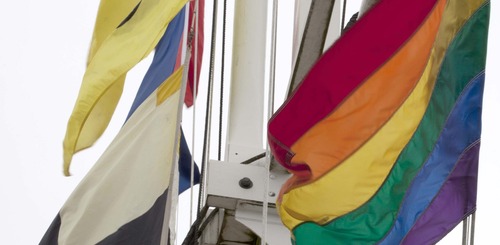
Ryan Josey @ Nocturne
In Reviews • # Halifax, Nocturne, Ryan Josey, visual art
The artwork of Nocturne 2014’s darling, Ryan Josey, recognizes history that dwells outside of typical National and Provincial narratives. Inspired by Margaret Atwood’s feminist poetry from the 60s, Josey’s artwork looks at Canadian identity from a queer and maritime perspective. This project should fit well with the theme of this year’s citywide art night, which is “Peripheral Visions.” Nova Scotia lies on the periphery of Canada geographically, while queer perspectives are peripheral to existing types of Canadian identity within National discourse.
Josey’s Nocturne project has common themes with his past work, however, it uses a different medium. In the past, Josey has done high-realism painting, which is extremely labour intensive and has a physically small result. He was attracted to NSCAD, where he is currently a student, because of its reputation for being conceptually focused. Teachers, such as Michael Fernandes, have taught him to view art as a part of life and encouraged him to “simplify, simplify, simplify and then cross out two of the simplifies”. Josey also cites Carla Taunton’s Indigenous art history classes for conceptually influencing his art.
His work explores gay, queer and postmodern histories. Particularly, he does this by referencing art and artists, who were queer, are arguably queer or who have contributed to queer culture. His upcoming piece plays with the idea of nautical flags as a form of communication. In using the nautical theme, Josey connects both gay and maritime identity. He uses his own poetry in the piece, thus combining the visual and written as a way to question how history is presented. He sees his art as a way to investigate his own identity as a queer and Nova Scotian person. In pointing to these peripheral histories, Josey asks three critical questions about Nova Scotian history: How do we typically understand Nova Scotia history? What was here before what is typically studied as Nova Scotian history? What parts of Nova Scotian history, like queer history, are largely unrecognized?
~
~